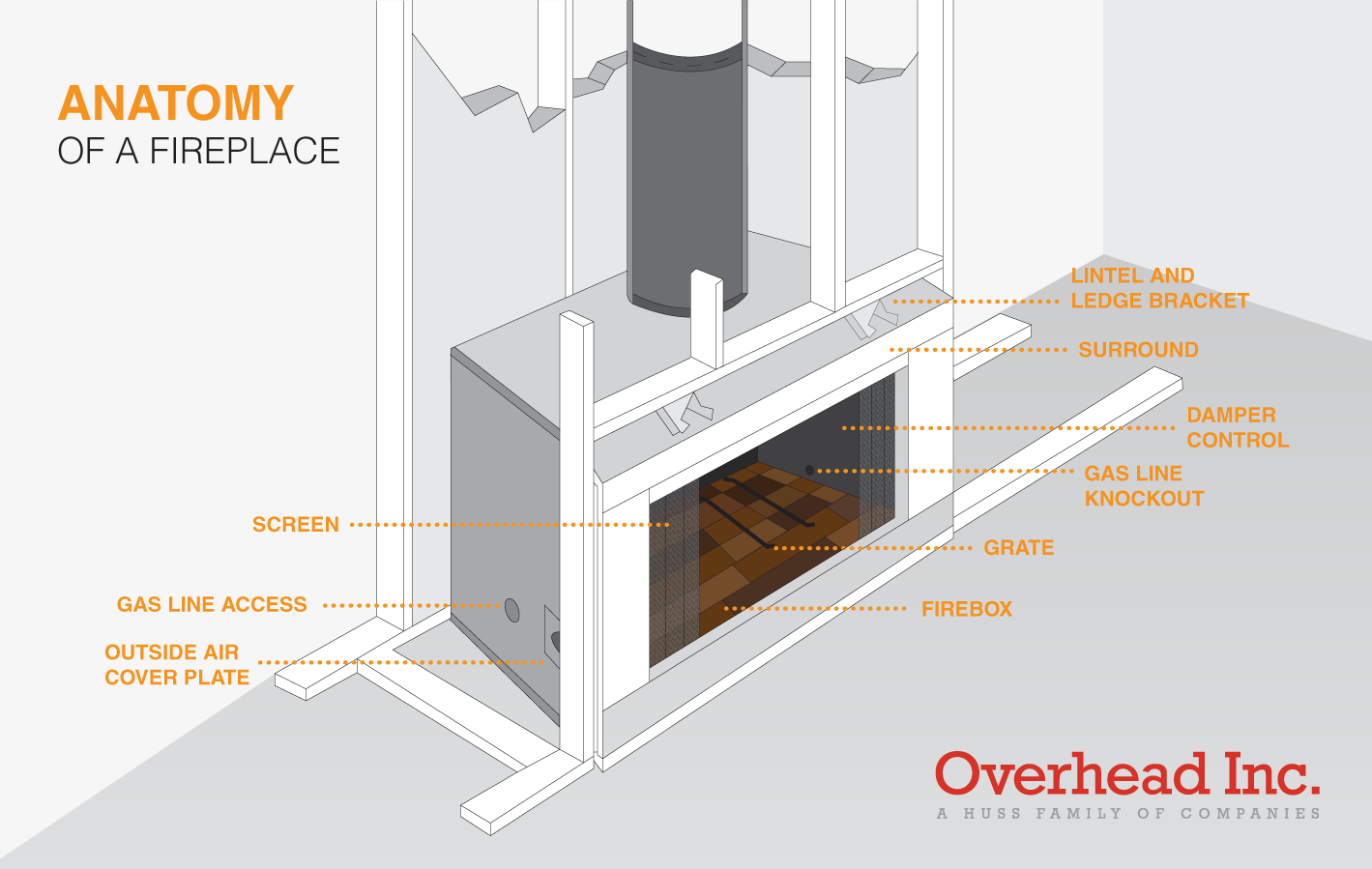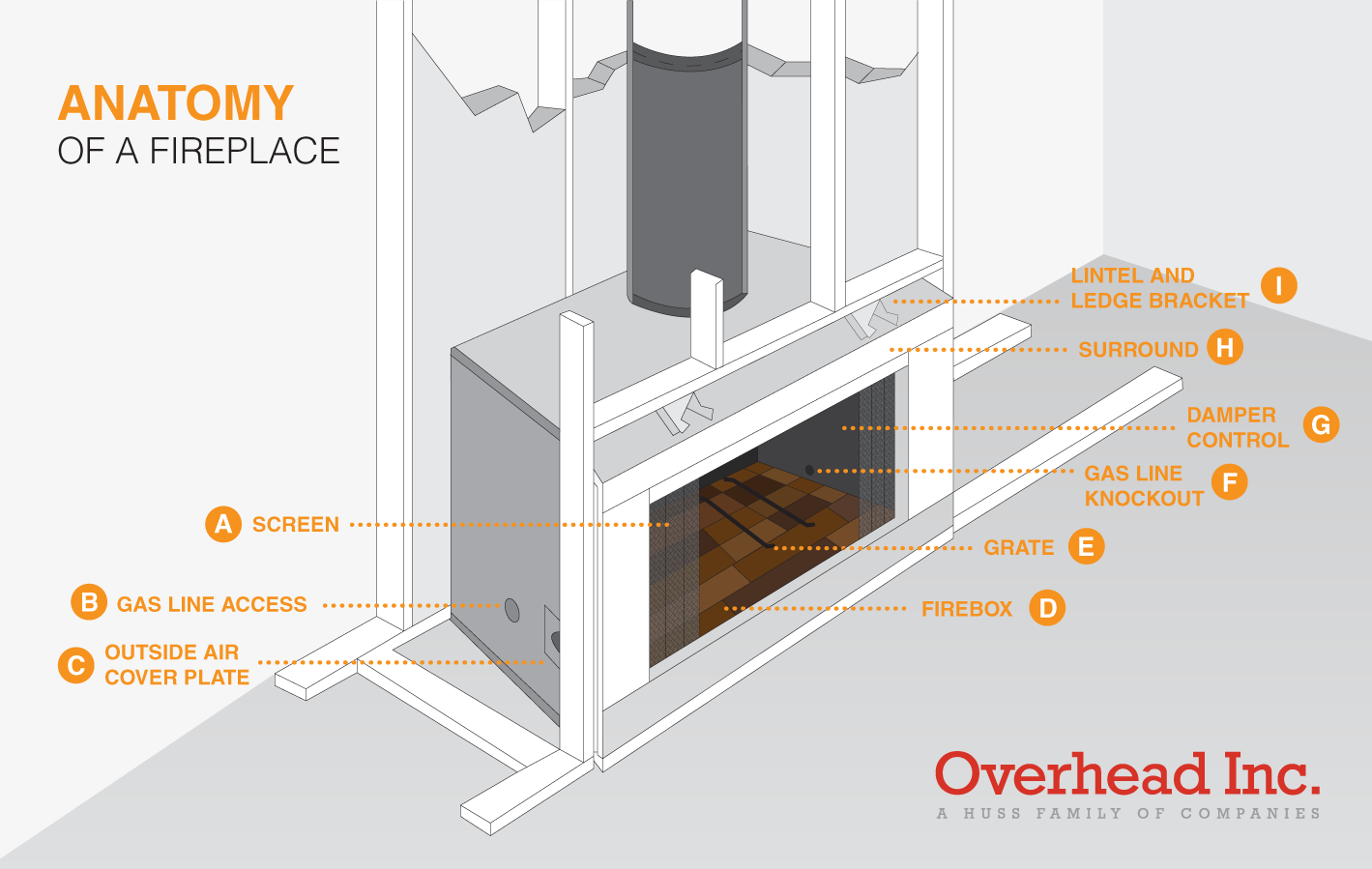Screen
A fireplace screen not only protects embers and sparks from escaping the firebox but it also protects any items from going into the fireplace. Even with glass doors, screens were added to fireplaces to protect individuals from serious burns.
Gas Line Access
Gas lines for a fireplace should be installed, moved, or repaired by a licensed plumber. From the service point, a gas line can be run through the wall or floor, depending on the fireplace location. After fireplace fittings are attached and sealed to the gas line access, your installer should test it to ensure there are no leaks.
Outside Air Cover Plate
Fireplaces draw additional air from the outside to fuel the fire. Outside air kits are installed for both wood burning and gas fireplaces. Drawing air from the outside improves the performance of your fireplace.
Firebox
The firebox is the area where fires are lit and burn. The firebox is open on one side with three surrounding walls and flat bottom. Traditionally, fireboxes are made of non-combustible materials such as masonry or prefabricated metals. Fireboxes need annual inspections to ensure they are not cracked or rusted.
Grate
A fireplace grate elevates gas or wood logs to improve airflow in the fireplace and protects the firebox floor from extreme heat. Most grates have curved ends which prevent logs from rolling out of the fireplace.
Gas Line Knockout
The gas line knockout access is the depression in the firebox that allows gas logs and a gas insert to be installed. If there is no knockout, then gas logs or a gas insert cannot be installed.
Damper Control
The damper is the small metal flap that separates the firebox from the flue. It allows air and smoke to be released when the fire is lit. When the fireplace is not in use, the damper should be closed. The damper control allows you to close and open the damper, adjusting the amount of air flow into the firebox.
Surround
A fireplace surround consists of three things - the sides, the top which is called the mantel, and the base, which is called the hearth. A surround turns a fireplace into a feature point for a home or business.
Lintel and Ledge Brackets
The lintel is the horizontal beam at the top of the fireplace that supports the weight of the chimney. The ledge brackets secure the gas fireplace insert doors to a masonry fireplace.



